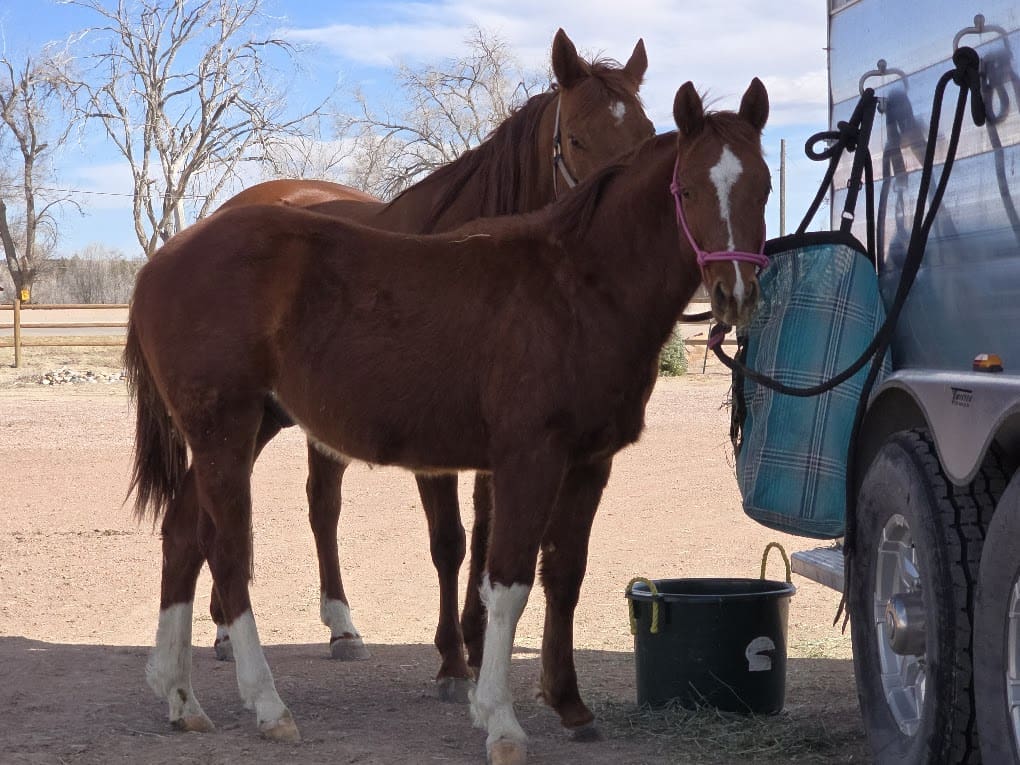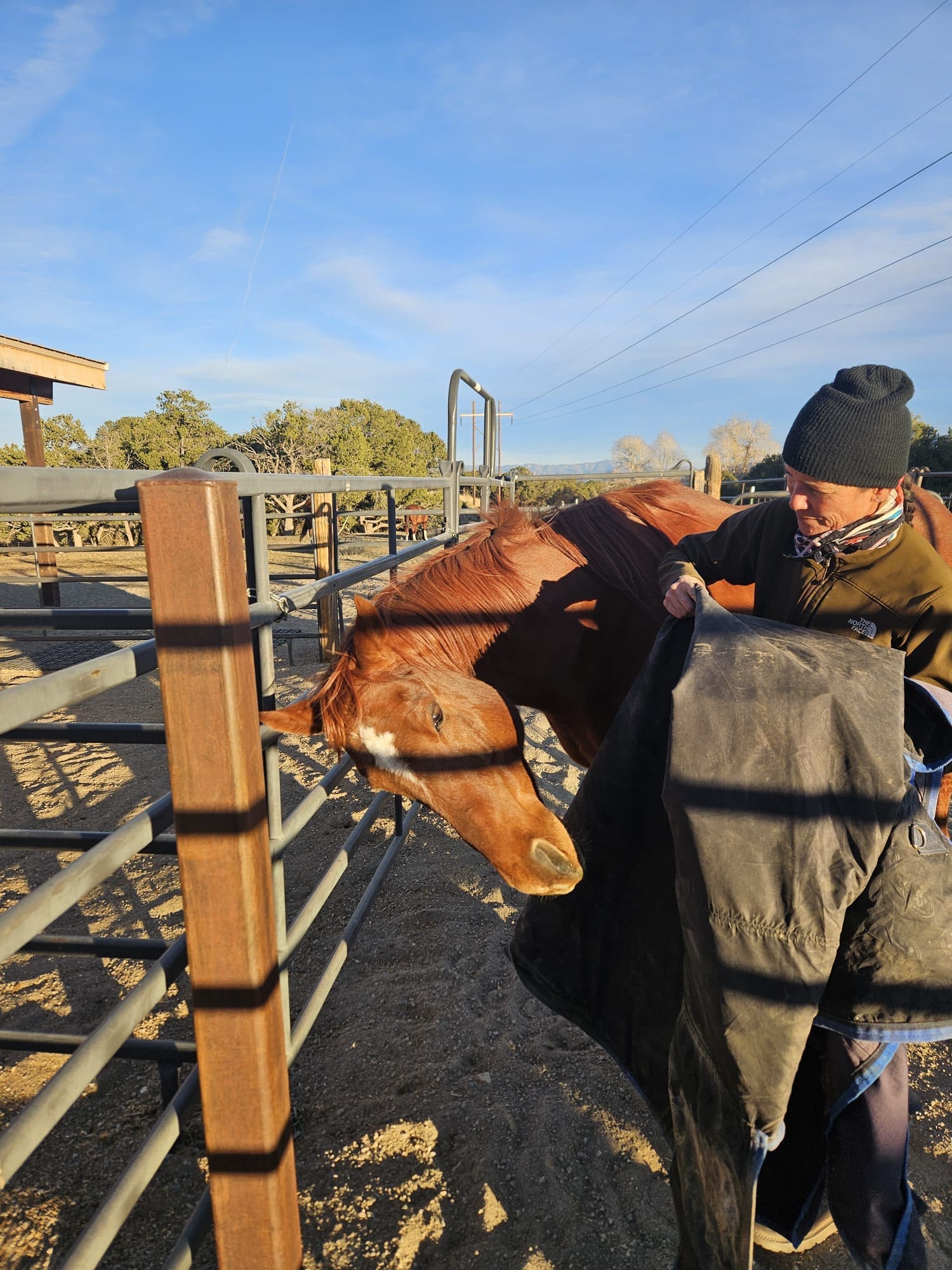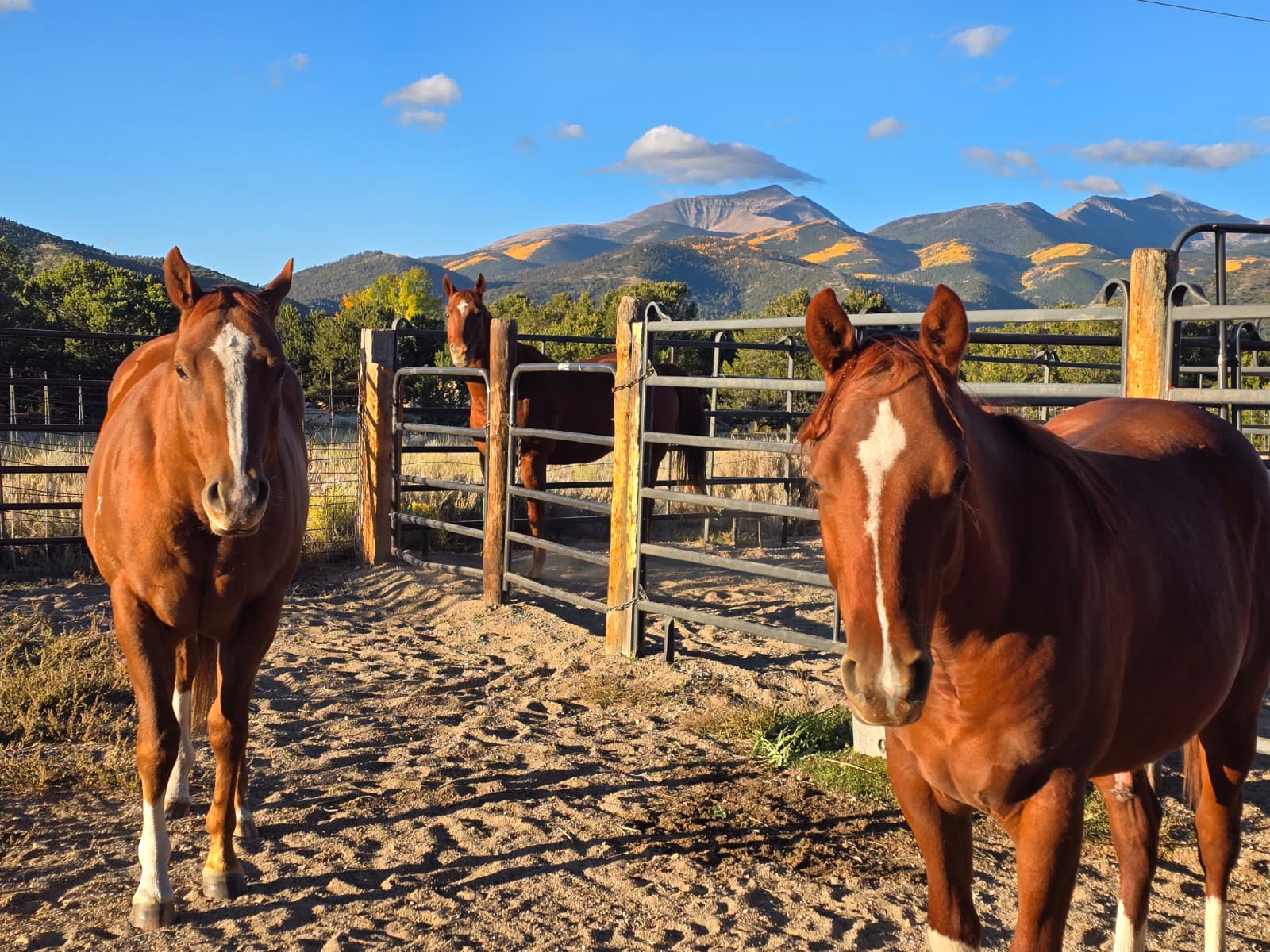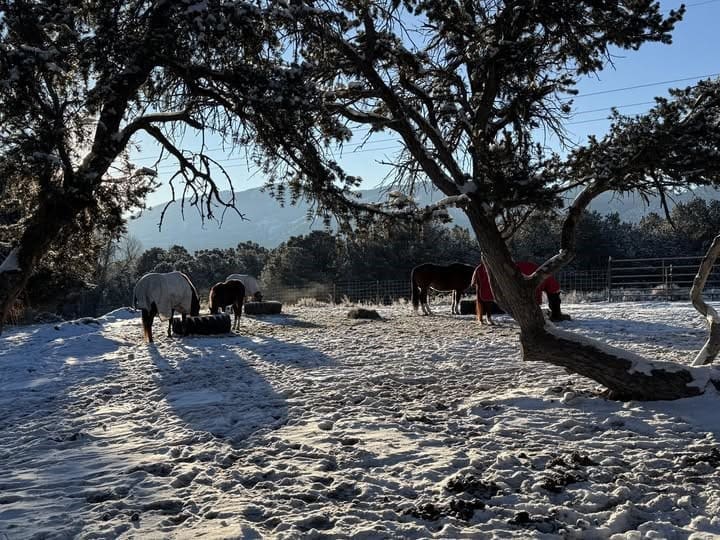Homeschooling for Rip

Kindergarten for Rip
With over a foot of snow on the ground on Easter weekend, it’s easy for us to forget it’s Springtime! Here in the Rocky Mountains, we watch the snowpack carefully this time of year, because it impacts our pastures and hay production this summer. We are well below average this year, but heavy spring snows can make up lost ground quickly. Therefore, we don’t complain about late snow storms!
My busy travel schedule has meant less time at home and less time to work with my yearling colt, Rip. But fortunately, his learning progresses anyway, in an organic manner. He is almost twelve months old now and his behavior is typical of a yearling colt (which often resembles a Tasmanian Devil). His impulsive and rambunctious behaviors are constantly kept in check by the older horses, who have increasingly less tolerance of impolite behavior, as do the people around them.
Rip is the first foal I’ve permanently kept with its mother. Typically, domestic horses’ foals are permanently separated from their mothers after weaning, for all kinds of practical reasons. The mare will go back to her life (or have another baby) and the foal graduates to its new life, whatever that entails. But in my case, neither mare nor foal are going anywhere and with a small herd of only five horses, they all stay together during the day.
It’s been amazing to watch how much Rip learns from the other horses. I’ve been actively using Annie and the geldings to help train Rip how to do the functional day-to-day things that we do with our horses, like catch/halter, lead, stand tied, groom, trailer, and free longe. Later, this organic learning will morph into more formalized training in saddling, ponying, and riding.
The concept that horses will learn from observing other horses has been well known for generations by horse trainers and more recently proven through scientific research. Horses, being herd, prey, and flight animals, instinctively mimic the horses around them. This is a big reason why you should be picky about whom you ride with. It’s the reason why when one horse spooks, they all get frightened. Moral of the story: pick your company wisely.
In Rip’s case, he is always surrounded by calm, mannerly, well-trained horses—lots of good role models! Rip’s herd includes his dam, Annie, and three geldings ranging in age from six to twenty. All four mature horses are very well-trained, reliable riding horses that are handled and ridden regularly.
While Rip is not formally in training yet, as a yearling, some handling is required. He needs to be halter trained, learn to stand tied, be desensitized to touch, examined by a vet, and have his feet trimmed by a farrier. It’s imperative that we can transport him by trailer, for a multitude of reasons. And, most importantly, he needs to learn proper comportment around people, so he’s not impulsively biting, kicking, striking, and mounting other horses or people. I’ve blogged and podcasted about this recently.
He’s certainly not learning all of that, just by observing other horses. I am directing his learning in very specific ways, but as we go about the daily business of barn life, Rip is learning by doing. Because what we require of him has purpose and because the other horses are also doing it, it’s much easier for Rip to understand and mimic their behavior.
Take transport, for instance. Since we trailer to the vet and farrier, which is 80 miles one-way through a winding canyon, Rip has already become a trailer-riding pro. Loading, unloading, balancing underway, tying to the outside of the trailer, munching hay and slurping down water while tied to the trailer—all part of the routine. We’ve never had a minute of formal trailer training, just a lot of functional experience, with Annie at his side to show him how it’s done.
The only downside to using the mature horses to help me train, is that at some point, we must be able to do this stuff alone. But functioning away from the herd is a concept every horse has to learn. With Annie at his side to help him learn the basics and gain experience and confidence, we can build a foundation for training and handling and set precedence for comportment, then work on independence later.
Already I am taking small steps towards separation from the herd when I am handling Rip. Slowly but surely, he’s learning that he doesn’t always get what he wants. I take him on short expeditions away from the other horses, then back to the herd when he’s calm and accepting. I’ll hold him back for a few minutes when the other horses are being turned out. These lessons will be brief but meaningful.
Rip’s lessons will get even shorter as he “learns to learn.” In other words, with consistent handling he’ll learn to look for the right answer and that when he gets it right, he’ll get what he wants. He’ll learn that when he feels pressure of any kind, that a release of pressure and praise will come when he finds the right answer. He’ll learn to look at me for a hint about what the right answer is.
Already I’ve seen this snowball effect happen with Rip, as he learns to learn. He’s figured out that tantrums are fruitless and that he’ll only get back to the herd when he’s calm and patient. This is the direct result of consistency in his handling.
We’ve got a long way to go before Rip is ready to start under-saddle training, but when that time comes, he should already be a well-mannered colt that understands the language of learning.



